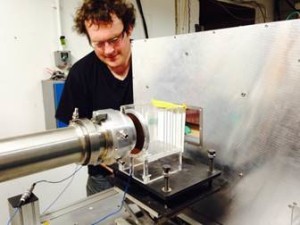Researchers at the University of Birmingham in the U.K. are using the BlueBEAR HPC service to simulate the use of protons for CT imaging. Generally reliant on X-rays to image the body’s composition and healthy tissue location before treatment, doctors are looking to the the project to build a device capable of delivering protons in a clinical setting.
The research will give us a better understanding of how a proton beam interacts with the human body, ultimately improving the accuracy of proton therapy,” said Dr Tony Price, PRaVDA research fellow. “The HPC service at The University of Birmingham is essential for us to complete our research, as it gives us the necessary capacity to simulate and record the necessary number of histories to create an image. It took us only three days to run a simulation of 180 million protons which would usually take 5400 hours without the cluster.”
Proton therapy targets tumors very precisely using a proton beam and can cause less damage to surrounding tissue than conventional radiotherapy – for this reason it can be beneficial treatment for children. The team hopes to simulate 1000 million protons per image over the course of the project, and will do so 97 per cent faster than on a desktop computer. A test simulation of 180 million protons, which would usually take 5400 hours without the cluster, has already been delivered in 72 hour. A team of researchers based at The University of Birmingham is working on ground-breaking research to create a proton Computed Tomography (CT) image that will help to facilitate treatment of cancer patients in the UK.
The BlueBEAR HPC service in use by the PRaVDA Consortium was designed, built and integrated in 2013 by OCF. Due to the stability and reliability of the core service, researchers have invested in expanding this service with nodes purchased from their own grants and integrated into the core service on the understanding that these nodes will be available for general use when not required by the research group.
The HPC service built by OCF has proven over the past two years to be of immense value to a multitude of researchers at the University,” said Paul Hatton, HPC & Visualization Specialist from he University of Birmingham. “Instead of buying small workstations, researchers are using our central HPC service because it is easy for them to buy and add their own cores when required.”





